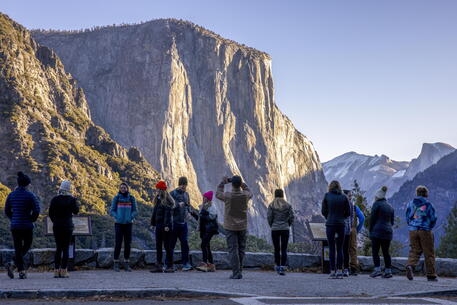Yosemite, the Grand Canyon and Yellowstone are about to get more expensive for foreign tourists. President Donald Trump on Thursday signed an executive order mandating higher entrance fees for international visitors to U.S. national parks, even as his administration plans to slash the Park Service’s budget by over $1 billion.
The White House defended the move as a way to secure new funding for conservation and deferred maintenance. The increased revenue from foreign tourists could raise “hundreds of millions of dollars” to reinvest in park infrastructure, it said in a statement. The order, however, does not specify the amount of the fee hike or when it will go into effect. It remains unclear which parks will be affected, though currently only about 100 of the 433 units managed by the National Park Service charge entrance fees.
The measure is likely to hit the growing number of foreign travelers — Italians among them — who plan road trips across the U.S. each summer and include iconic parks in their itineraries. They can now expect higher prices, tighter reservation systems, and new rules giving Americans preferential treatment. The executive order instructs the Interior Department to revise its permitting and reservation platforms to ensure that U.S. citizens receive priority access.
“Charging higher entrance fees to foreign tourists is a common policy at national parks throughout the world,” the administration said in its statement. It added that U.S. taxpayers already contribute to the parks through federal taxes in addition to entry fees, and that it is therefore “equitable” to require a greater contribution from international visitors.
The move comes as the Trump administration prepares to implement deep spending cuts. The proposed budget for fiscal year 2026 includes a reduction of more than one-third to the National Park Service’s funding, over $1 billion in total. The cuts are expected to strain both day-to-day operations and long-term maintenance.
According to the National Parks Conservation Association, a watchdog group focused on park preservation, the Park Service’s permanent workforce has shrunk by 24% since Trump returned to office last November. Of the 8,000 seasonal workers planned for this summer, only 4,500 have been hired so far. Staffing shortages have already forced partial closures, limited programming, and slower emergency response in parks such as Yosemite in California and Big Bend in Texas.
Meanwhile, attendance at national parks continues to climb. In 2024, the U.S. park system recorded 331 million visits — an increase of 6 million compared to the previous year.












